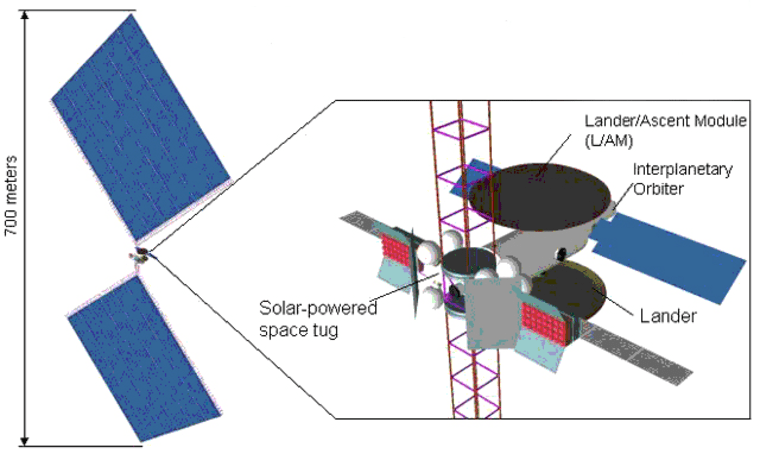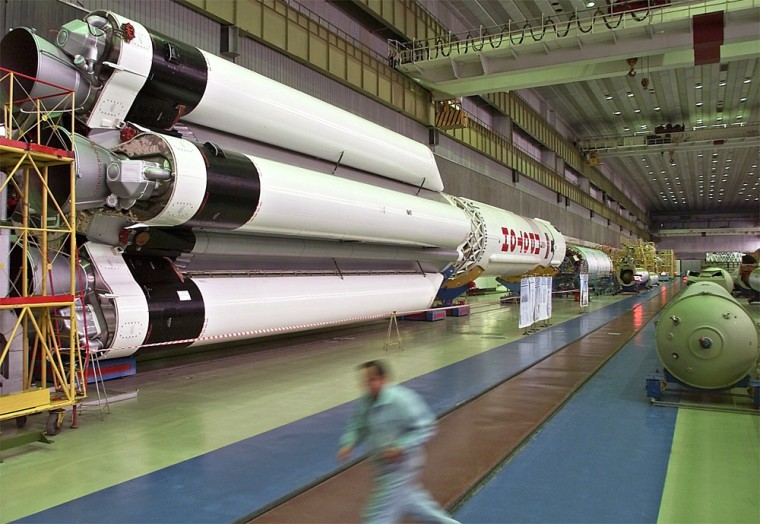Russia’s space engineers spent years designing futuristic spacecraft for missions to Mars with little hope they would survive the financial meltdown of the nation’s once-glorious space program.
But President Bush’s announcement of a new thrust into space has awakened hopes that these dreams could come true in a new alliance with the United States.
From giant booster rockets to tiny robots, Russia has developed a range of cutting-edge space technologies it now hopes to share with the United States to send humans to the moon and Mars.
It would offer the cash-strapped space industries an alternative to China, which put a man in orbit last year, envisages conquering the moon and has sought Russian technology and know-how for its space program.
“We not only can, but we must participate in these (U.S.) projects,” Vyacheslav Filin, a senior designer for the RKK Energia rocket manufacturer, told the Interfax news agency Friday. “A new step is necessary in space, a new unifying project.”
Russia's highs and lows
The Soviet Union put the first human and the first satellite in space and, in 1988, Soviet President Mikhail Gorbachev was the first to propose a joint U.S.-Russian manned mission to Mars. But Washington’s reaction was lukewarm, and the Soviet Union collapsed just two years later, leaving Russia’s space program in shambles.

Its space industries have struggled ever since. The single interplanetary robotic mission that Russia managed to mount since the Soviet collapse failed miserably in 1996.
Despite the money crunch, designers continued drafting projects of new ships. At Energia, a team led by Leonid Gorshkov has done some preliminary design work on an interplanetary ship and landing vehicles for a manned mission to Mars.
Those engineers have conceived a 77-ton spacecraft, modeled on the Russian Zvezda module for the international space station built by Energia, that could carry a crew of four to six people to Mars at a cost of $15 billion.
Long-duration missions
The Institute for Medical and Biological Problems, the premier center for research in space medicine, is launching a 500-day experiment next year intended to model a mission to Mars, according to Mark Belakovsky, a leading institute expert.
A crew of six volunteers will be locked in a mock-up spacecraft loaded with more than 5 tons of food and more than 3 tons of water, he said.
Russian cosmonaut Valery Polyakov holds the world record for the longest space mission — 438 days in 1994-1995 — roughly the time believed required for a round trip to Mars.
The trip would require improved onboard life-support systems, stronger protection from harmful space radiation and new approaches to crew training. Russian scientists say their nation’s experience in long-term orbital missions gives it an edge.
“Russia has unique expertise in long-term space flights, particularly in the field of space medicine and biology,” Belakovsky said.
Russian know-how
Other Russian space engineers said the United States would be bound to tap into Russia’s rich expertise in space if it goes ahead with interplanetary missions.
Denis Pivnyuk, a deputy director of the Khrunichev State Research and Production Center, a leading Russian rocket manufacturer, said such missions are feasible and can be based on hardware and know-how that already exist.
“It’s a large-scale effort, but it’s quite possible to carry it out on the basis of existing technologies,” Pivnyuk told The Associated Press.
Some Russian space engineers talked about using Khrunichev’s Proton booster rockets to launch components of a Mars spacecraft to be assembled in orbit. Others spoke of reviving the giant Energia booster, mothballed for lack of money and mission following two successful launches in the late 1980s.
Vyacheslav Mikhailichenko, a spokesman for the Russian Aviation and Space Agency, said the huge payload of Energia, which was built to excel the U.S. Saturn 5 “Moon rocket,” could make it useful in future lunar and Mars missions.
